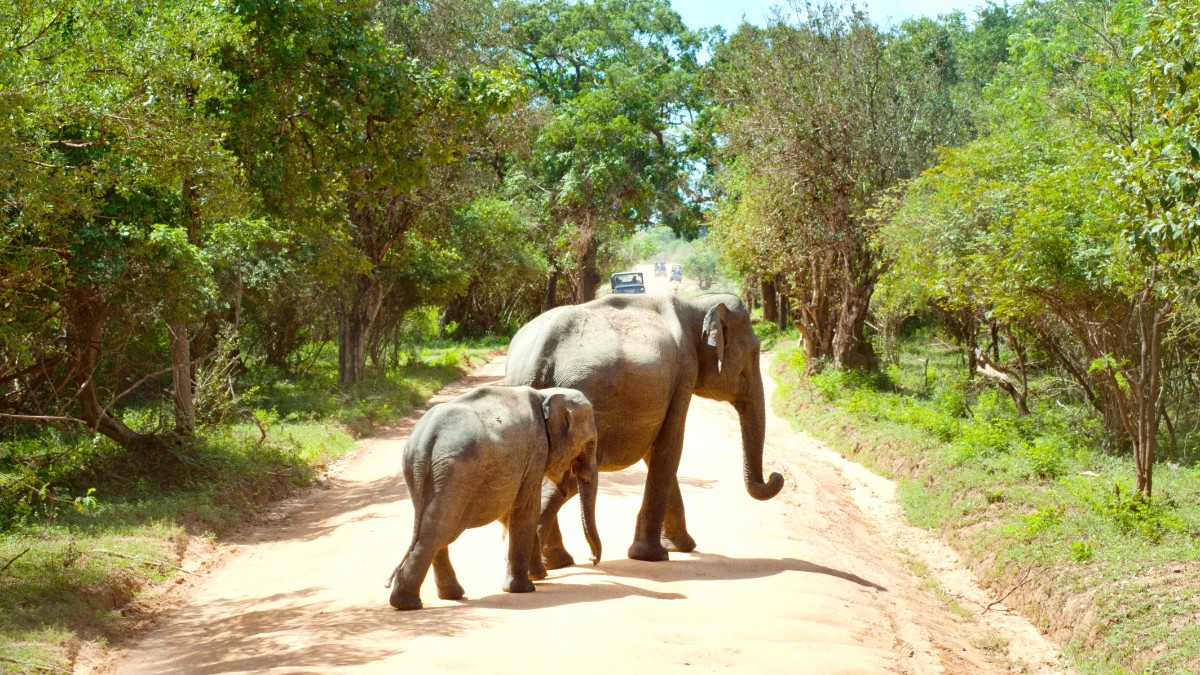
The South, Sri Lanka
Imagine the sun climbing above a dry, ancient landscape, painting the sky with warm hues. The air carries the sounds of distant birds and rustling leaves. Suddenly, a flash of spotted gold moves through the dense scrub – a leopard. This is the promise of Yala National Park, a premier wildlife destination where such encounters are a regular occurrence. Yala consistently draws visitors eager for wildlife sightings, making it a required stop for nature lovers. The park’s unique ecosystem, combined with its high density of leopards, places it among the best wildlife parks in the world. Visitors often arrive hoping for a glimpse of this elusive cat, and Yala often delivers, providing moments of pure wonder.
The area now covered by Yala National Park has a long history, dating back thousands of years. Evidence of ancient civilizations, including megalithic burials, exists within the park's boundaries. The region was once part of the Ruhunu Kingdom, one of the three ancient kingdoms of Sri Lanka.
Yala’s status as a protected area began in 1900 when the British declared it a wildlife sanctuary. In 1938, it became one of Sri Lanka’s first two national parks, solidifying its role in conservation. Inside Block 1, the Sithulpawwa Rock Temple is a testament to this deep history, offering a spiritual and historical layer to the safari experience.
Yala National Park provides a complete safari experience, standing out as Sri Lanka’s premier location for wildlife viewing. It is most famous for having one of the highest densities of leopards globally, making it a top choice for those hoping to see these animals. Beyond leopards, the park hosts a varied population of other animals. You can find large herds of elephants, the shaggy sloth bear, and crocodiles basking by the water. Spotted deer, sambar, wild boar, and various types of monkeys roam the plains. Over 215 bird species, including many migratory birds, make Yala a haven for bird watchers.
The landscape itself is a mix of habitats, from dense jungle and thorny scrub to open grasslands, rock formations, and coastal dunes. This variety supports the park’s rich biodiversity. Safaris here happen in open-sided jeeps, led by skilled drivers and trackers who locate the animals and share their knowledge. The best times to visit for wildlife viewing typically align with the dry season, when animals gather around the shrinking water sources. Yala connects you profoundly with nature, allowing you to witness the island’s wild beauty up close.
One of the highest densities globally, a prime spot for leopard sightings.
Elephants, sloth bears, crocodiles, spotted deer, wild boar, various monkeys.
Over 215 bird species, including many migratory visitors.
Dense jungle, thorny scrub, grasslands, rock formations, coastal dunes.
Open-sided jeep safaris with experienced drivers and trackers.
The park also holds cultural importance with its ancient sites, like the Sithulpawwa Rock Temple, offering a blend of natural wonder and historical depth. The nearby towns of Tissamaharama and Kataragama serve as practical bases, providing accommodation and access to the park’s entrance. Tissamaharama, with its scenic lake and old stupa, offers a peaceful contrast to the excitement of the safari. Kataragama, a significant pilgrimage town, provides a look into Sri Lanka's multi-religious culture. Visitors often spend one or two days on safari, allowing ample time to explore the park and its surroundings.
Tissamaharama (Tissa) is a convenient base, with a range of hotels, guesthouses, and safari operators. Kataragama, a significant pilgrimage town, sits a short drive from the park, offering a different cultural dimension.
The park’s geographical layout influences wildlife behavior, especially during dry periods when animals gather around shrinking waterholes, making sightings more frequent. Early morning safaris are recommended for higher animal activity.
To get the most from your visit, consider booking an early morning safari. Animals are more active during the cooler parts of the day, increasing your chances of memorable sightings.
Yala consistently draws visitors eager for wildlife sightings, making it a required stop for nature lovers. The park’s unique ecosystem, combined with its high density of leopards, places it among the best wildlife parks in the world. Visitors often arrive hoping for a glimpse of this elusive cat, and Yala often delivers, providing moments of pure wonder.
The connection between the wild landscape and these ancient sites creates an unique blend of nature and heritage for visitors, making Yala a truly unforgettable destination.
One of the world's best locations for spotting leopards in their natural habitat.
Beyond leopards, encounter elephants, sloth bears, and numerous bird species.
Explore ancient sites like Sithulpawwa Rock Temple within the park.
The park is divided into several blocks, with Block 1, also known as Ruhuna National Park, being the most frequently visited.
Yala is globally recognized for its high leopard density, offering excellent chances to spot these elusive cats.
A diverse landscape supports a wide array of wildlife, including elephants and numerous bird species.
Ancient historical sites within the park boundaries add an unique cultural dimension to your wild adventure.
Bandaranaike International Airport (CMB) is the main entry point. Domestic flights to Mattala (HRI) or Weerawila (WRZ) shorten overland travel time to Yala.
No direct train line to Yala. Closest station is Matara. Buses connect Tissamaharama to major cities. Self-driving is not recommended due to challenging roads and required permits.
Tuk-tuks are common for short distances. Public buses are cheap but can be crowded. Walking is possible in towns, but strictly prohibited inside the park.